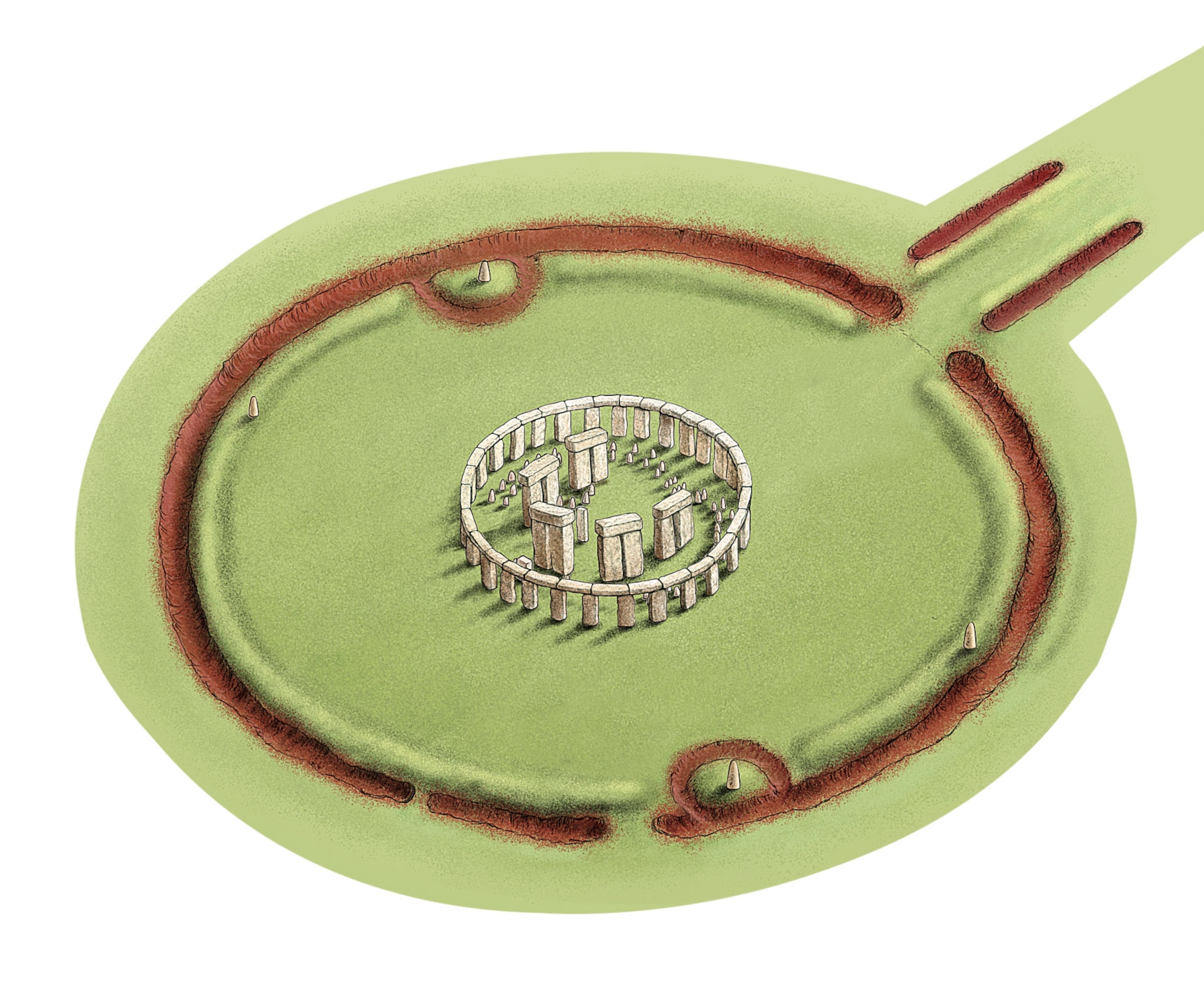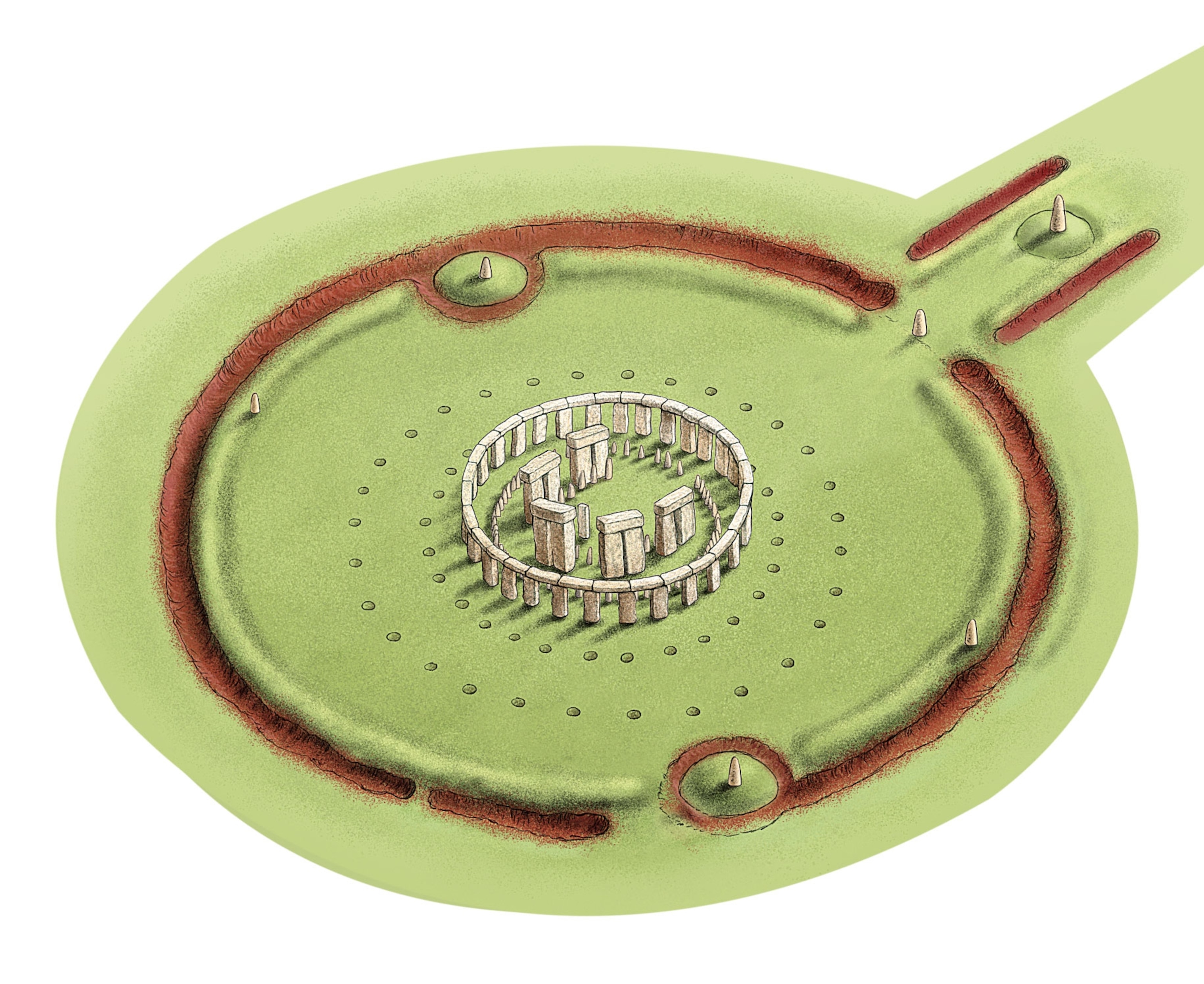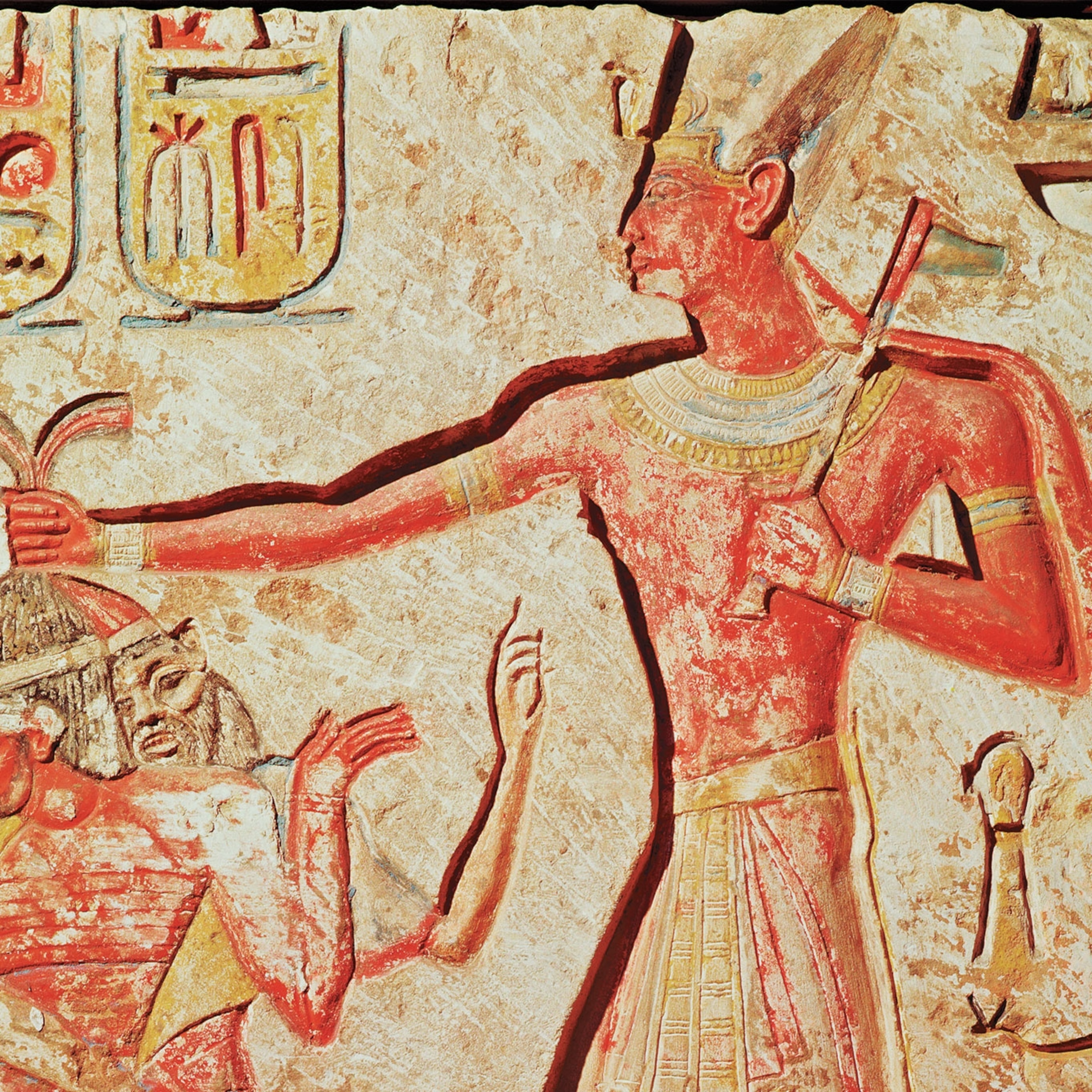
Stonehenge was part of a multi-monument complex. Here's how it fit together
Archaeologists are beginning to piece together the complex relationships between Stonehenge and other Neolithic sites on Salisbury Plain.
Massive and mysterious, Stonehenge has stood for 4,500 years on Salisbury Plain. Located some 90 miles southwest of London, England, the world’s most famous pre-historic monument forms just one piece of an intricate complex of ancient sites, many of which in 1986 were designated part of a UNESCO World Heritage site. Today, traffic whizzes by on the nearby A303, but the megaliths’ presence makes it easy to step back thousands of years to a much slower time with much slower transportation.

Over the last two decades, archaeologists have made huge strides in piecing together these different elements of the landscape, their relationships to each other, and what they are revealing about the Neolithic people who built them. Armed with astronomical knowledge, engineering skills, and unmovable determination, their creations succeeded in capturing people’s imaginations for millennia. (Decision over Stonehenge Tunnel sparks controversy.)
Wizards and kings
Perhaps the most famous—and fantastic—explanation for Stonehenge’s creation harkens back to Arthurian legend. The wizard Merlin allegedly transported the stones from Ireland according to Geoffrey of Monmouth’s 12th-century chronicle of British kings. Another 12th-century writer, Henry of Huntingdon, described the monument as “[s]tones of remarkable size, raised up like gates, in such a way that gates seem to be placed on top of gates. And no one can work out how the stones were so skillfully lifted up to such a height or why they were erected there.” The name Stonehenge was derived from the term Henry used to describe the monument: Stanenges, which is Anglo-Saxon for “stone gallows.”
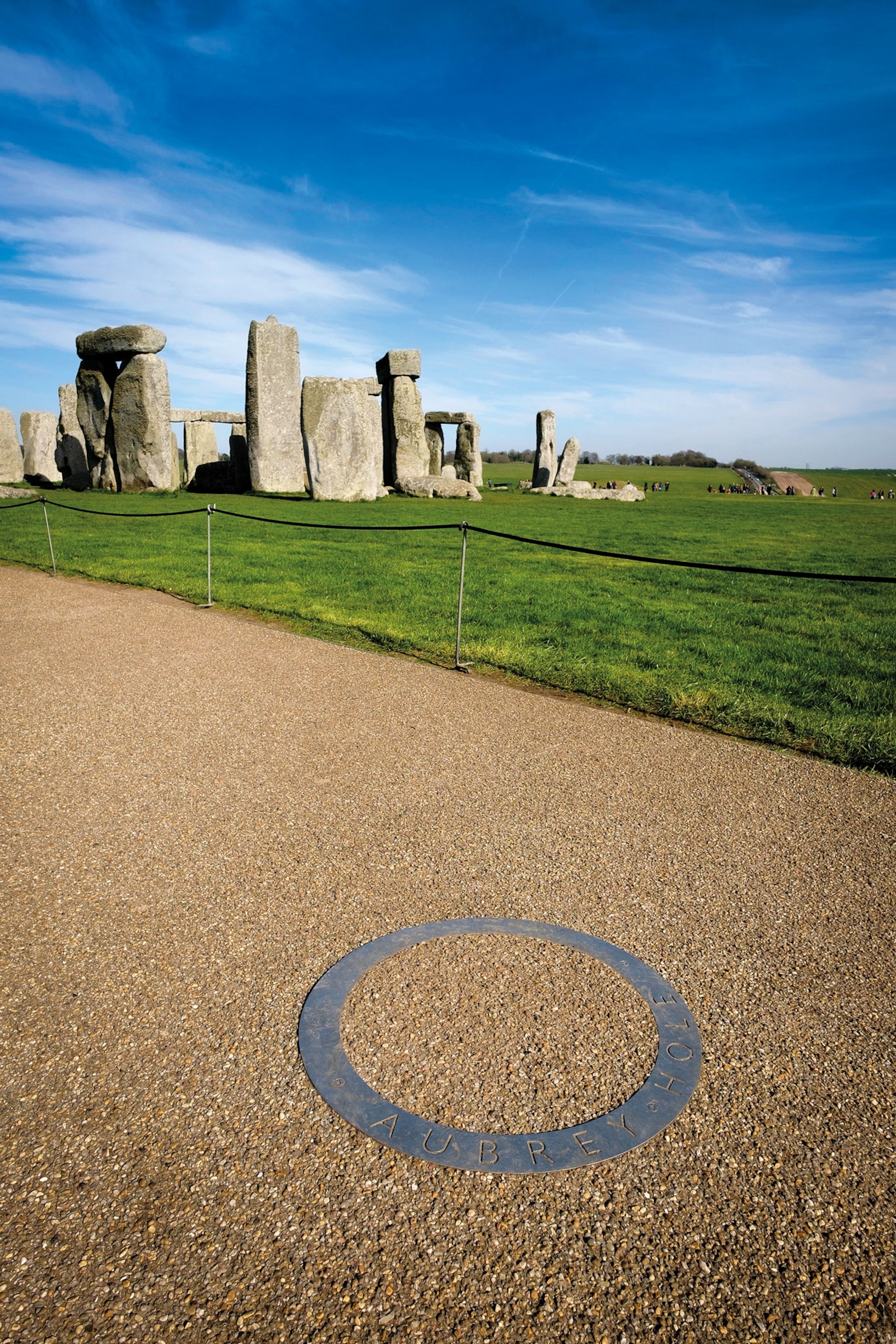
Theories over the stones and their purpose proliferated in the 17th century. English architect Inigo Jones was convinced that Stonehenge was a Roman temple built using the principals of classical architecture. Philosopher Walter Charleton disagreed with Jones and claimed that the Vikings had built it. Scholar John Aubrey made the first thorough assessment of the site—one of the world’s first true archaeological explorations—and argued that ancient British Druids had erected the megaliths. Aubrey’s work in the 1660s uncovered 56 holes in the ground, arranged just inside a circular earthwork surrounding the giant standing stones. Today they are called the Aubrey Holes in his honor, and modern scholars believe that wooden posts once stood in them.
Work continued into the 18th century, when the scholar William Stukeley identified the Avenue, a roughly two-mile lane that connects the Avon River with Stonehenge. Like Aubrey, Stukeley considered the stone circles to have been built by Druids.In the 19th century scholars began to consider a prehistoric provenance. Based on restoration work starting in 1900, William Gowland argued for a Late Neolithic or Early Bronze Age date for the creation of the complex, a proposal that has become the basis for today’s scholarship.
Building blocks
The Stonehenge complex features many Neolithic siteslong the banks of the Avon River. Archaeologists believe the landscape was first regarded as special because retreating glaciers hollowed out furrows in the ground that, by coincidence, aligned with significant positions of the sun at the June and December solstices.
One of the first human-made features was the Greater Cursus, an earthwork begun around 3500 B.C. This massive trench that measures nearly two miles long and several hundred feet wide. Stukeley was the first to identify the feature, located about a half mile north of Stonehenge. The Greater Cursus’s precise purpose is unknown, but scholars believe it had a ceremonial function. (These Scottish ruins predate Stonehenge.)
Millennia in the making
Work on the iconic stone circles began centuries after the Greater Cursus, around 3000 B.C. The earliest section was an outer circular earthwork, formed by a moat and two embankments on either side. The central horseshoe made of trilithons (two upright stones topped by a lintel) and the surrounding outer ring of stones were completed around 2500 B.C. These giant building blocks, called sarsens, are sandstone. Weighing around 25 tons each, they were quarried only about 20 miles from where they are today. The 80 smaller slabs of dolerite bluestone standing alongside them came from much farther away: western Wales, a distance of about a 140 miles.
Moving the stones
The first stones believed to be erected at Stonehenge also traveled the farthest to get there. Archaeologists discovered that the bluestones, each weighing around four tons, were brought to Stonehenge from the Preseli Hills of southwestern Wales—a journey of more than 140 miles by land. The theory was first proposed as early as the 1920s, and geological research undertaken in the 2000s has conclusively pinpointed the exact location of the quarries, called Carn Goedog and Craig Rhos-y-felin, where the stones were excavated.
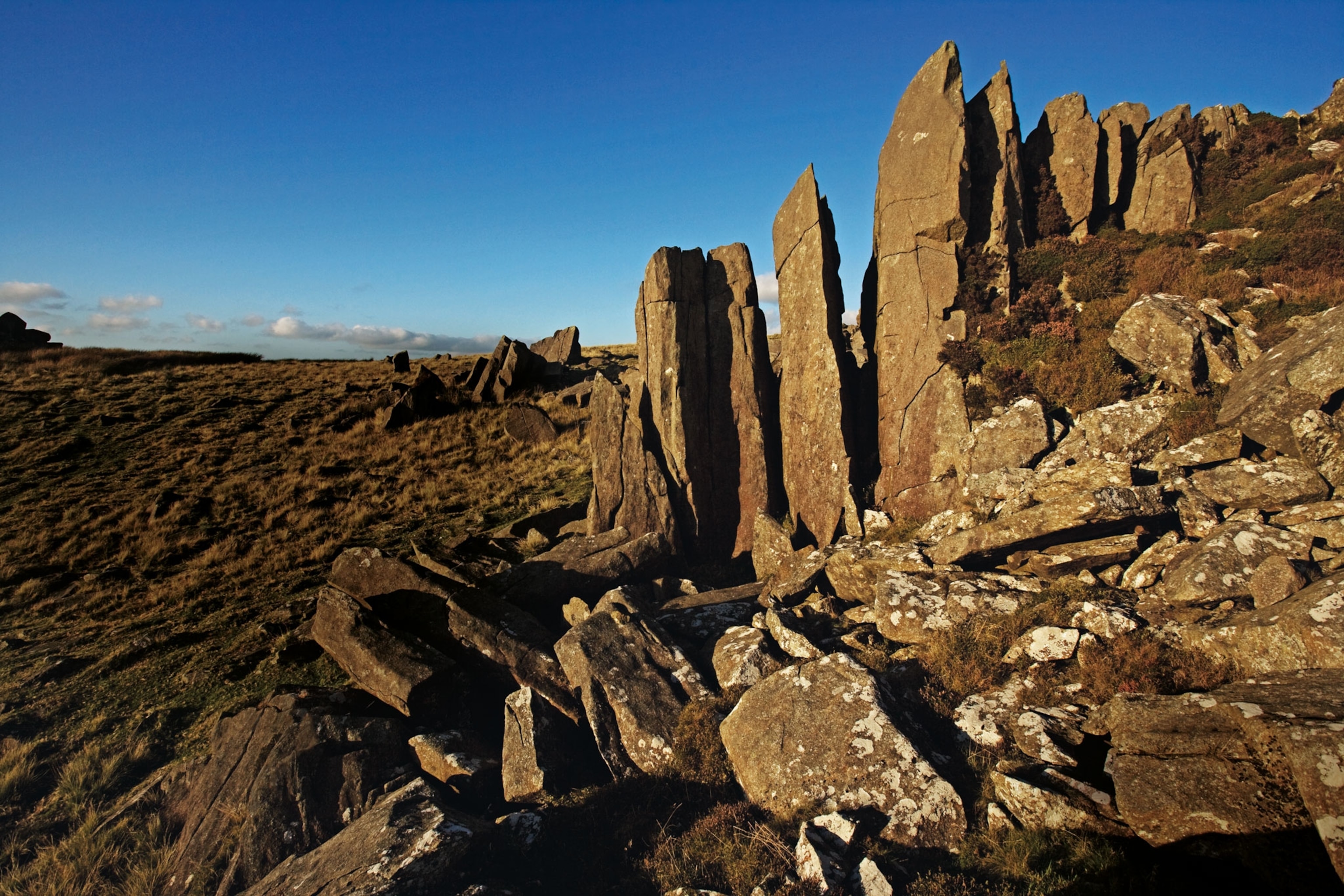
Scholars are still debating how the bluestones actually got from Wales to the Salisbury Plain. One theory, now discredited, was that glaciers had borne the stones and deposited them in England; most scholars now agree that people transported them. The question of how, and whether by land or by water, remains to be answered. Some propose the stones could have been floated along the coastline and then up through waterways to reach the Avon River before being hauled to the Stonehenge site. Others believe the Welsh stones were loaded on to sleds and dragged overland, perhaps as a public display meant to impress. (From Angkor Wat to Stonehenge: Here's how ancient people moved giant stones.)
Scholars aren’t certain why these particular stones were chosen for the site or why people went to such great effort to move them from Wales to England. Recent isotope analysis of human remains uncovered at Stonehenge indicated that people from the same region as the bluestones were buried on the Salisbury Plain, leading some to believe they may have been the workers who quarried and escorted the bluestones to their new home.
Complex connections
Archaeologists today regard Stonehenge and its environs as a “ritual landscape,” a group of monuments positioned in a place that had ceremonial significance. The Avenue, constructed after 2500 B.C., is one of these elements that quite literally links sacred spaces together by connecting the standing stones to the Avon River. This lane is aligned to the sunset of the winter solstice and the sunrise of the summer solstice, which has aroused questions about how much celestial knowledge the Neolithic builders employed.
Other monuments connect to Stonehenge in both symbolic and physical ways. About two miles northeast of Stonehenge is Durrington Walls. It is itself a complex site that consists of the remains of a huge circular earthwork. Before the earthwork was built, archaeologists believe a large village occupied the site and may have housed both workers and pilgrims.
The full importance of Durrington Walls, has recently become clearer. In the early 2000s, the SRP found the remains of a Neolithic settlement there consisting of hundreds of dwellings. This village may have housed the people who built Stonehenge, as well as pilgrims who attended feasts, evidence of which has been found in the form of animal bones, mostly pigs (of the 8,500 specimens, swine outnumbered cattle ten to one).
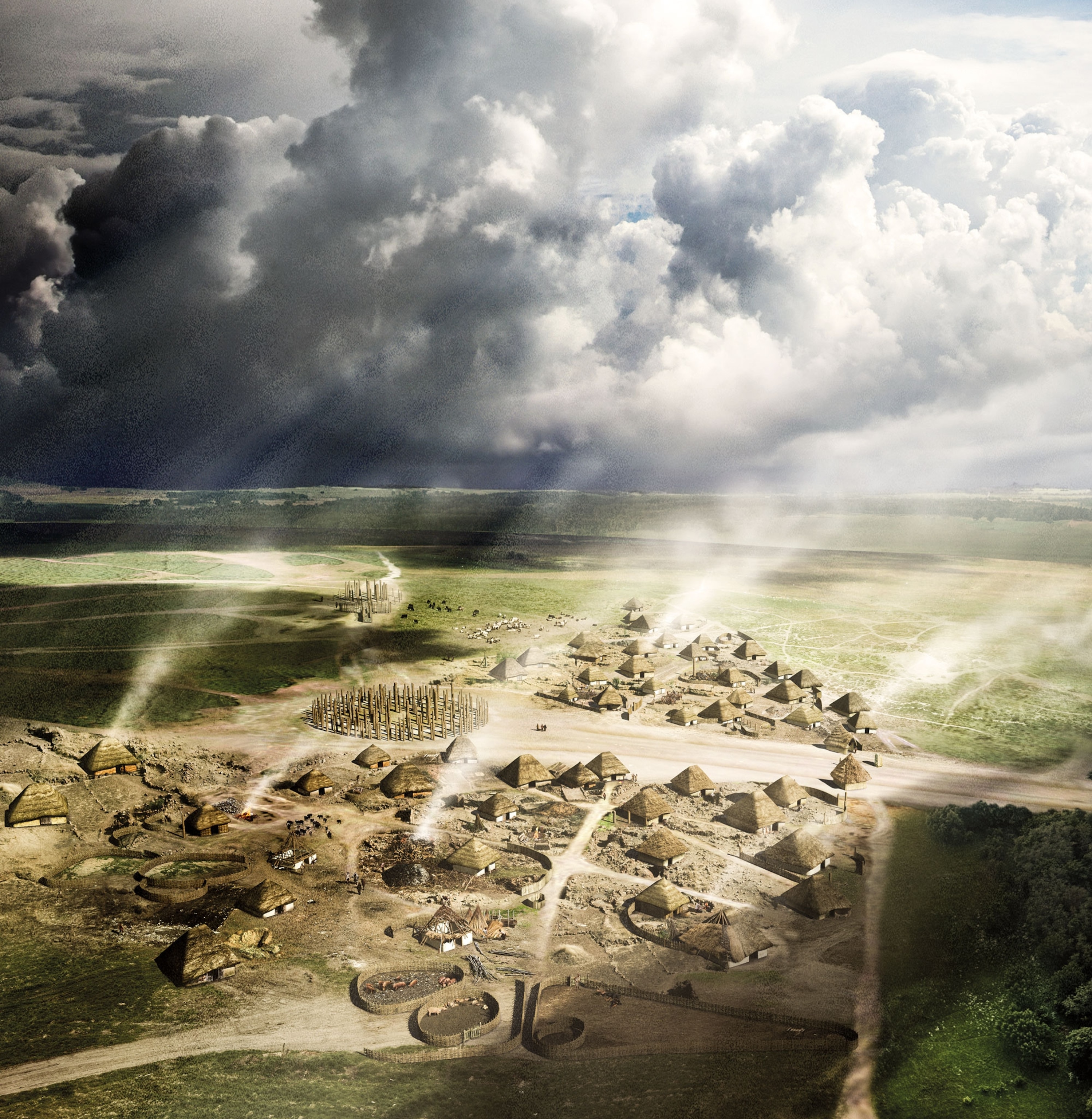
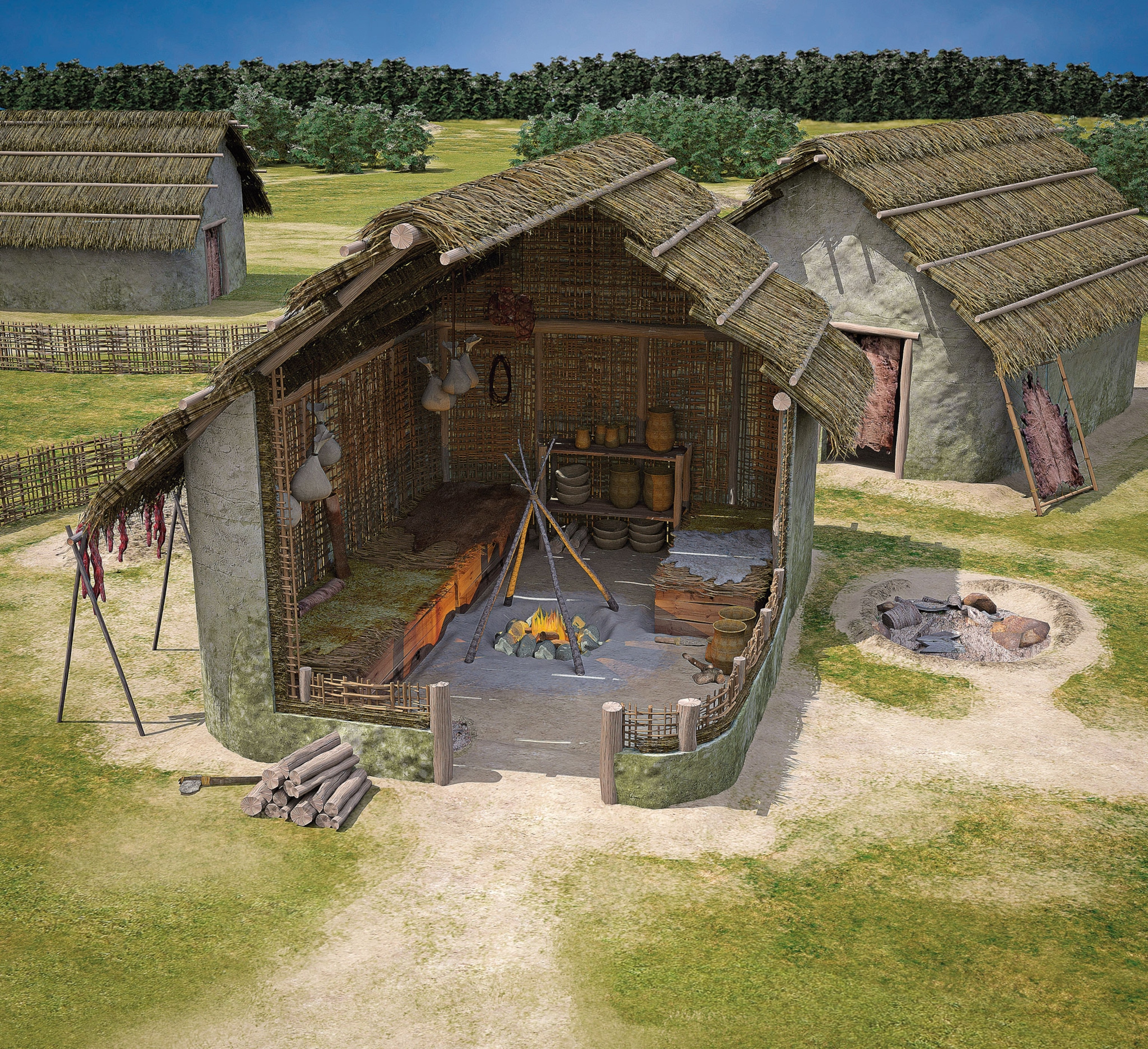
Isotope analysis of the pig bones also shows that all were not locally raised; instead, they were brought by pig-roast attendees from all over Britain, including parts of Wales and Scotland. The food evidence supports the hypothesis that Stonehenge and its surrounding sites were ceremonial gathering places for the British world, not just the local population. This village would eventually be abandoned and a massive circular earthwork—the largest “henge” structure in Great Britain—was built on the site.
Recent finds—a series of pits about two feet deep—indicate that a massive timber structure once stood near Durrington Walls. Grouped together in an arc measuring more than a mile across, 20 pits have been excavated, and there are as many as 300 in total. Sturdy wood posts, perhaps as tall as 15 feet, once stood there, creating another iconic sight on the horizon of Salisbury Plain.
Earth, wood, and rock
South of Durrington Walls is Woodhenge, which was identified from above in a photograph taken by airplane pilot Gilbert Insall in 1925, one of the earliest discoveries in the field of aerial archaeology. Welsh-born archaeologist Maud Cunnington later excavated the site. Upon finishing in 1929, her team found that these rings were a series of holes in the ground that once held poles, some estimated to stand as high as 25 feet. Surrounded by an outer bank and ditch, the tall timbers were arranged in six rings and might have supported a thatched roof. At the center, Cunnington uncovered a burial containing the split skull of a child; she interpreted it to be a ritual sacrifice, but unfortunately the remains, taken off-site for study, were lost and unable to be examined further.
Another more recent discovery was found by the Stonehenge Riverside Project (SRP), co-directed by Mike Parker Pearson from the University of Sheffield (and funded in part by the National Geographic Society). In 2009 the SRP announced the finding of the West Amesbury Ring, also known as Bluestonehenge. Located at the end of the Avenue closest to the Avon River, this circular structure is believed to have once consisted of six-foot-tall standing stones. (High-tech mapping reveals hidden monuments Under Stonehenge.)
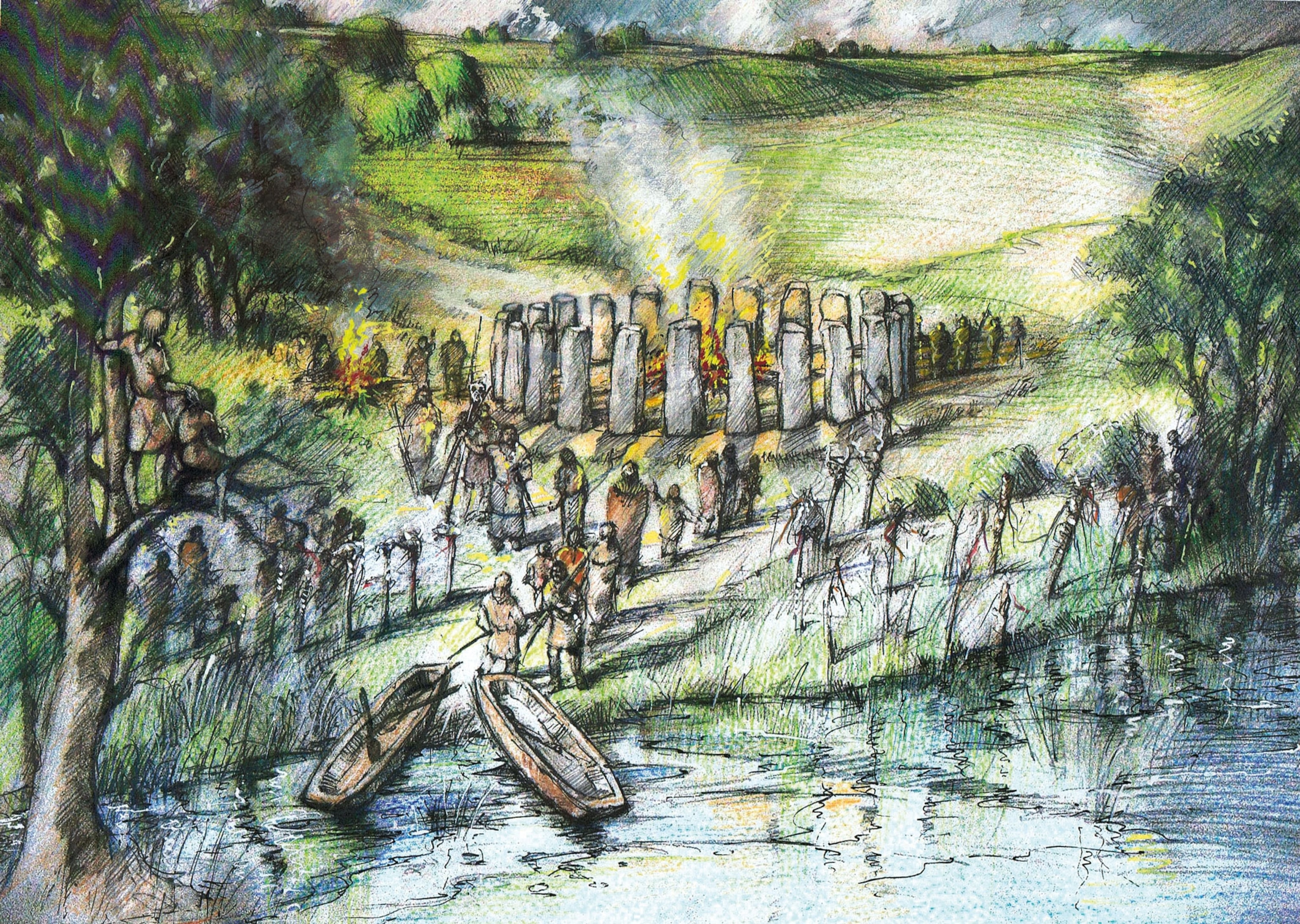
Heaven and earth
Archaeologists now believe that all of these structures were interrelated, connected by cultural relationships and spiritual meanings. The exact nature of the beliefs of the people who built these structures has, of course, been one of the principal questions asked for centuries. Between 2003 and 2009, the SRP undertook dozens of digs in the complex in an attempt to find more insight into the intentions of the builders.
What is clear is that Stonehenge and the surrounding structures all played parts in the rituals surrounding life and death. The SRP found that some 63 known cremations took place near Stonehenge, making it one of the biggest Neolithic cremation sites in Europe.

Parker Pearson’s team analyzed the remains of dozens of cremated individuals found in one of the Aubrey Holes and discovered that many of the individuals were not born in the region. Their findings strengthened the theory that Stonehenge drew people from all over ancient England. Parker Pearson and his team believe the complex probably acted as an early, unifying force across the region, a role that Stonehenge itself continues to play today as it draws in visitors from all over the world.
The 20th-century astronomer Gerald S. Hawkins once described Stonehenge as a “Neolithic computer,” with its massive stones deliberately placed to coordinate with heavenly events. The most famous solar alignment occurs on the solstices in June and December. Archaeologists believe that the Stonehenge complex was more than just a calendar and probably served several purposes over the years, including religious rites surrounding life and death. (Why summer solstice is one of the best times to visit Stonehenge.)

The SRP theorizes that Stonehenge served, among other things, as a center for ancestor worship, supported by the presence of cremated individuals. The SRP also explored the symbolic links between the massive stone rings and a similar wooden structure at Durrington Walls. The stone rings stood for the domain of the dead, and the wooden for that of the living, with the Avenue between them representing the connection between the two worlds.

